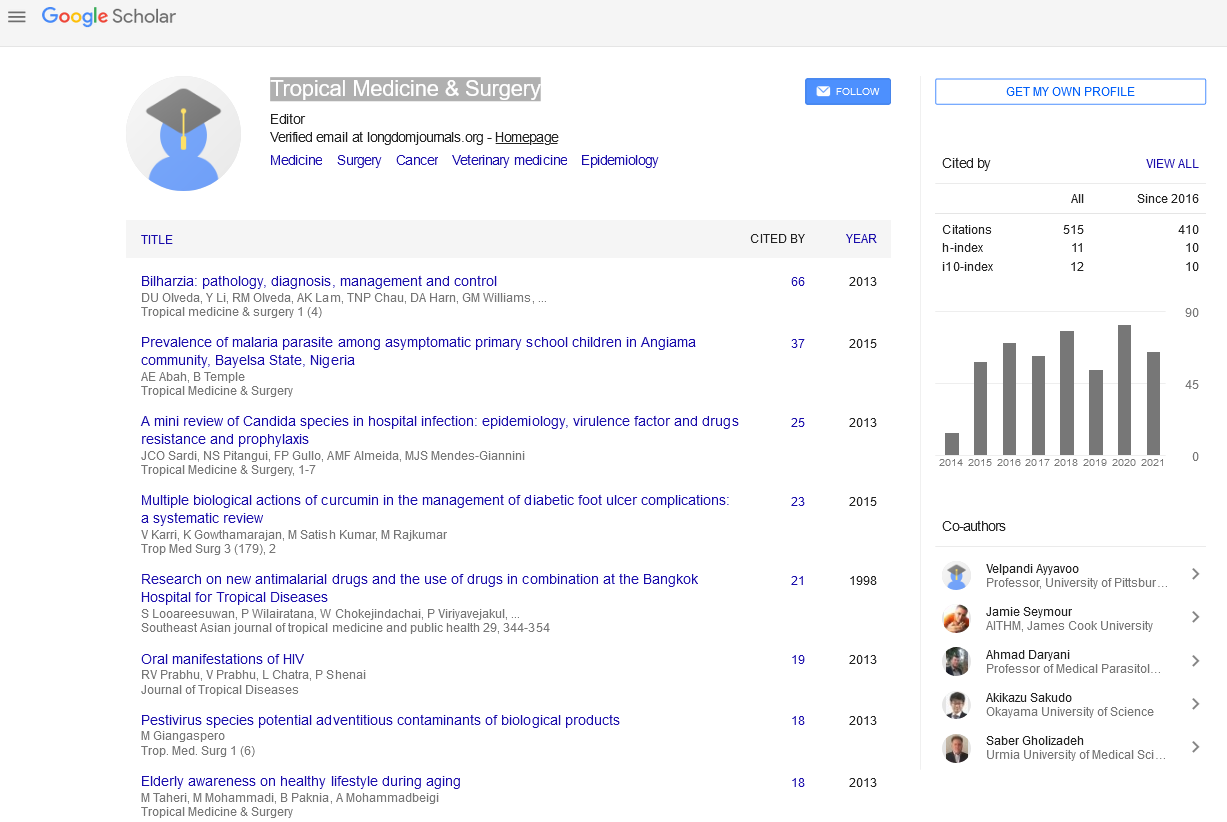PMC/PubMed Indexed Articles
Indexed In
- Open J Gate
- Academic Keys
- RefSeek
- Hamdard University
- EBSCO A-Z
- OCLC- WorldCat
- Publons
- Euro Pub
- Google Scholar
Useful Links
Share This Page
Journal Flyer

Open Access Journals
- Agri and Aquaculture
- Biochemistry
- Bioinformatics & Systems Biology
- Business & Management
- Chemistry
- Clinical Sciences
- Engineering
- Food & Nutrition
- General Science
- Genetics & Molecular Biology
- Immunology & Microbiology
- Medical Sciences
- Neuroscience & Psychology
- Nursing & Health Care
- Pharmaceutical Sciences
Abstract
Surprising Results of the EMPA-REG OUTCOME Study have brought a New Insight into Use of Sodium-Glucose Co-transporter 2 Inhibitors in Patients with Type 2 Diabetes
A surprising new study EMPA-REG OUTCOME has shown that empagliflozin, one of sodium-glucose cotransporter 2 (SGLT2) inhibitors, in addition to standard care had beneficial effects on cardiovascular morbidity and mortality in patients with type 2 diabetes at high risk for cardiovascular events. Subgroup analyses of the study revealed a better hazard ratio for the primary outcome (death from cardiovascular causes, nonfatal myocardial infarction, or nonfatal stroke) in Asian than Caucasian and in patients with age ≥65 years, body-mass index <30, glycated hemoglobin <8.5% or higher cardiovascular risk than with the respective counterparts. Patients on diuretics also had the hazard ratio favoring empagliflozin, similar to that of patients not on diuretics. I infer that in poorlycontrolled diabetic patients, pre-existing osmotic diuresis is supposed to be augmented by the administration of SGLT2 inhibitors, possibly leading to an acceleration of their dehydration in spite of amelioration of hyperglycemia. Hypovolemia is inferred to be more likely to occur due to osmotic diuresis without an increase in blood glucose level to retain water. It may be recommended that use of SGLT2 inhibitors should be avoided in diabetic patients with glycated hemoglobin ≥8.5% at high risk for cardiovascular events. Because empagliflozin seems to have had no significant effect on nonfatal myocardial infarction or stroke, its ability to reduce cardiovascular mortality may be mediated through osmotic diuresis. SGLT2 inhibitors could be used as a new oral osmotic diuretic to excrete water with a little sodium into urine for non-diabetic patients with heart failure as well. Such action of SGLT2 inhibitors seems to be rather close to that of tolvaptan to promote water diuresis. Thus, the EMPA-REG OUTCOME study has brought a new insight into use of SGLT2 inhibitors in patients with type 2 diabetes.

